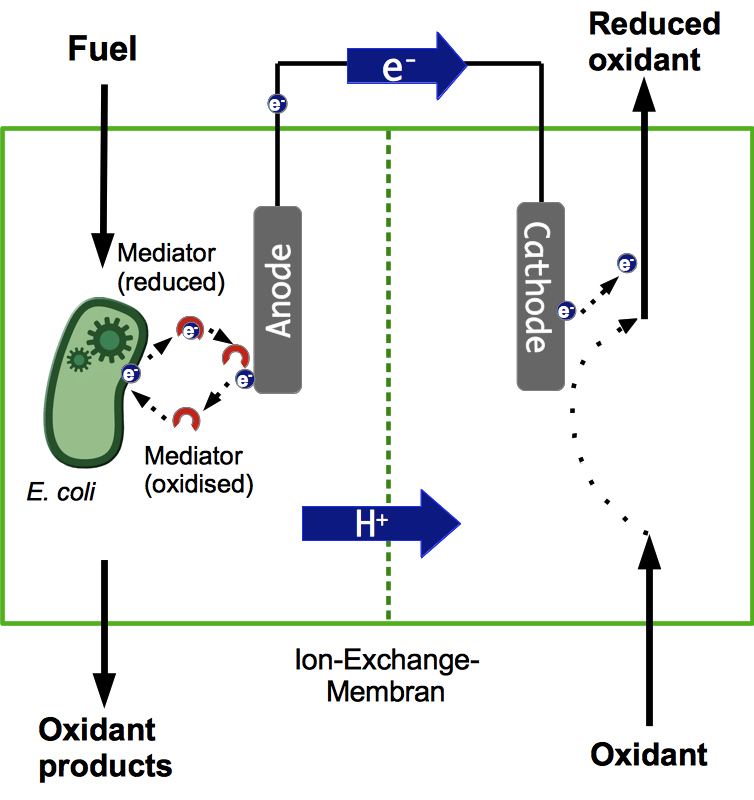Team:Bielefeld-Germany/Project/MFC
From 2013.igem.org
Microbial Fuel Cell
A microbial fuel cell (MFC) can be utilized for power generation through the conversion of organic substrates by microorganisms. The fuel cell generally consists of two separate units, the anode and
cathode compartment. Both compartments are separated by a proton exchange membrane (PEM). Microorganisms acting as biocatalysts release electrons during metabolic reactions and transfer
them to the anode of the fuel cell. The simultaneously generated protons are transferred through the PEM directly to the cathode compartment, while the electrons have to pass through an external
load circuit. These electrons reduce an electron acceptor on the cathode side. Both anaerobic and aerobic electron acceptors may be used. Optimization of electron transfer is an important
parameter for the effective use of an MFC. Generally, electrons can be transferred to the anode either by direct contact or through mediators.
 "
"


